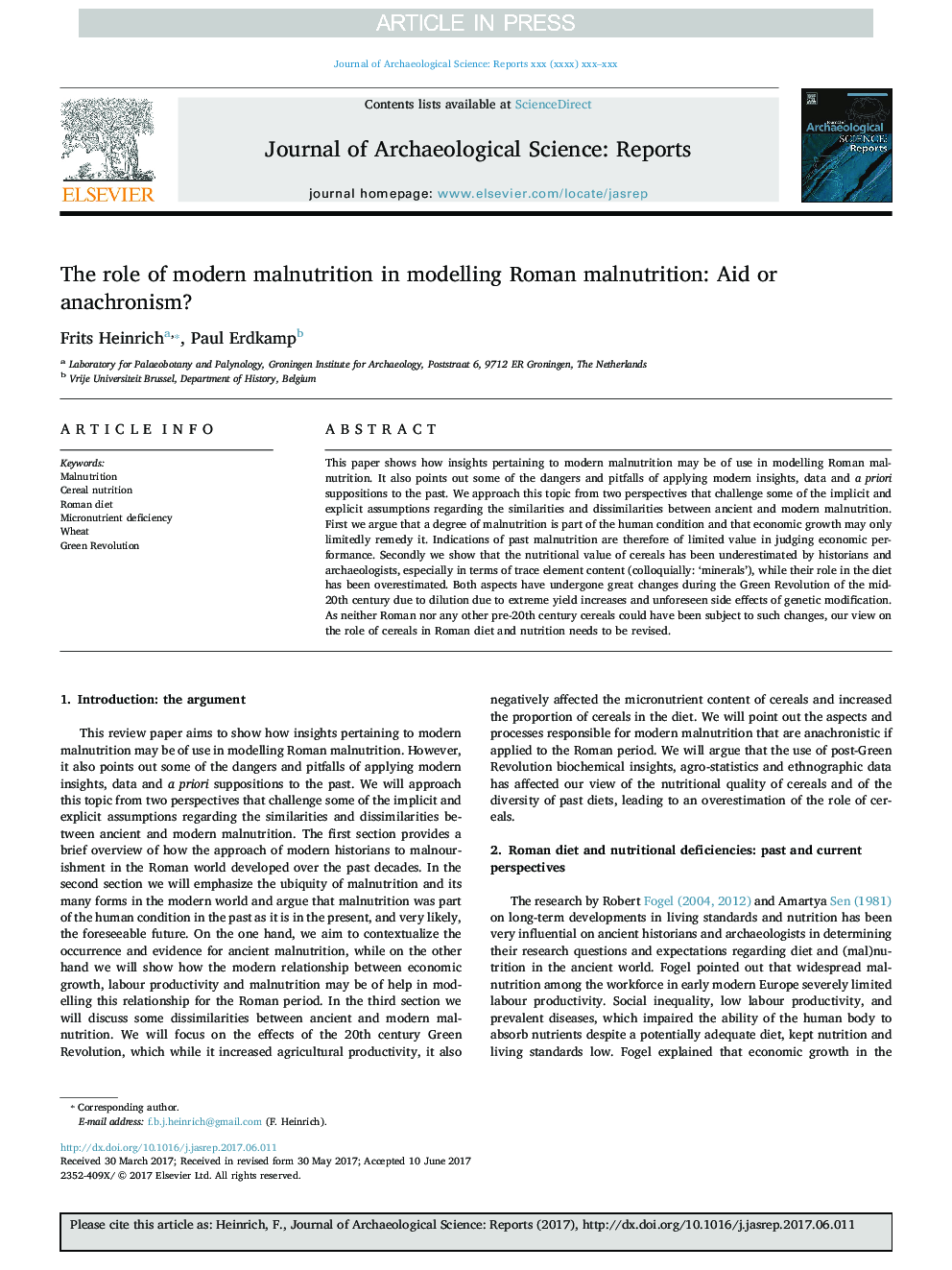| Article ID | Journal | Published Year | Pages | File Type |
|---|---|---|---|---|
| 7444418 | Journal of Archaeological Science: Reports | 2018 | 7 Pages |
Abstract
This paper shows how insights pertaining to modern malnutrition may be of use in modelling Roman malnutrition. It also points out some of the dangers and pitfalls of applying modern insights, data and a priori suppositions to the past. We approach this topic from two perspectives that challenge some of the implicit and explicit assumptions regarding the similarities and dissimilarities between ancient and modern malnutrition. First we argue that a degree of malnutrition is part of the human condition and that economic growth may only limitedly remedy it. Indications of past malnutrition are therefore of limited value in judging economic performance. Secondly we show that the nutritional value of cereals has been underestimated by historians and archaeologists, especially in terms of trace element content (colloquially: 'minerals'), while their role in the diet has been overestimated. Both aspects have undergone great changes during the Green Revolution of the mid-20th century due to dilution due to extreme yield increases and unforeseen side effects of genetic modification. As neither Roman nor any other pre-20th century cereals could have been subject to such changes, our view on the role of cereals in Roman diet and nutrition needs to be revised.
Related Topics
Social Sciences and Humanities
Arts and Humanities
History
Authors
Frits Heinrich, Paul Erdkamp,
